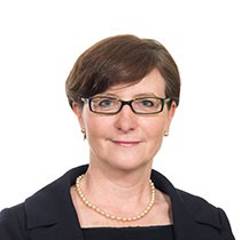13/12/2022
We recently considered health and safety issues arising from the recent inquest of Awaab Ishak. In this second part, we consider the particular duties which apply to the housing sector in respect of safeguarding children, which this case has highlighted.
As we examined in part one of our article, on 15 November 2022, following six days of evidence at Rochdale Coroner’s Court, an inquest found that prolonged exposure to black mould in the home environment was “entirely” responsible for a respiratory condition that ultimately led to the tragic death of two-year old Awaab Ishak.
Given the very young age of Awaab Ishak when he died, the case highlights the need to ensure the most vulnerable, including children that live in social housing are protected.
In essence, section 11 of the Children Act 2004 places duties on organisations and any services they contract out to others, to have regard to the need to safeguard and promote the welfare of children. This includes local authorities and district councils that provide children’s and other types of services, including children’s and adult social care services, public health, housing, sport, culture and leisure services, licensing authorities and youth services. Organisations are expected to have in place a senior board level lead who is sufficiently qualified and experienced to take leadership responsibility for the organisation’s safeguarding arrangements.
The latest statutory guidance published by the Department for Education is Working Together to Safeguard Children 2018 (Working Together).
This guidance notes that under Part 1 of the Housing Act 2004, authorities must take account of the impact of health and safety hazards in housing on vulnerable occupants, including children, when deciding on the action to be taken by landlords to improve conditions.
Where housing services are being delivered not by a local authority, but by voluntary organisations, charities, social enterprises and private sector organisations and agencies, these organisations will still play an important role in safeguarding children through the services they deliver. Safeguarding is a shared responsibility.
Organisations and agencies should have in place arrangements that reflect the importance of safeguarding and promoting the welfare of children, including:
- A clear line of accountability for the commissioning and/or provision of services designed to safeguard and promote the welfare of children
- A senior board level lead with the required knowledge, skills and expertise or who is sufficiently qualified and experienced to take leadership responsibility for the organisation’s/agency’s safeguarding arrangements
- A culture of listening to children and taking account of their wishes and feelings, both in individual decisions and the development of services
- Clear whistleblowing procedures, which reflect the principles in Sir Robert Francis’ Freedom to Speak Up Review and are suitably referenced in staff training and codes of conduct, and a culture that enables issues about safeguarding and promoting the welfare of children to be addressed
- Clear escalation policies for staff to follow when their child safeguarding concerns are not being addressed within their organisation or by other agencies
- Arrangements which set out clearly the processes for sharing information, with other practitioners and with safeguarding partners
- A designated practitioner (or, for health commissioning and health provider organisations/agencies, designated and named practitioners) for child safeguarding. Their role is to support other practitioners in their organisations and agencies to recognise the needs of children, including protection from possible abuse or neglect. Designated practitioner roles should always be explicitly defined in job descriptions. Practitioners should be given sufficient time, funding, supervision and support to fulfil their child welfare and safeguarding responsibilities effectively
- Safe recruitment practices and ongoing safe working practices for individuals whom the organisation or agency permit to work regularly with children, including policies on when to obtain a criminal record check
- Appropriate supervision and support for staff, including undertaking safeguarding training
- Creating a culture of safety, equality and protection within the services they provide.
In addition:
- Employers are responsible for ensuring that their staff are competent to carry out their responsibilities for safeguarding and promoting the welfare of children and creating an environment where staff feel able to raise concerns and feel supported in their safeguarding role
- Staff should be given a mandatory induction, which includes familiarisation with child protection responsibilities and the procedures to be followed if anyone has any concerns about a child’s safety or welfare
- All practitioners should have regular reviews of their own practice to ensure they have knowledge, skills and expertise that improve over time.
Information sharing and lessons learnt
Information sharing and an understanding of partnership agencies' responsibilities under the Children Act 2004 are very important in order to safeguard and protect children.
In this case, the Coroner’s findings included “evidence that in 2020 there were numerous different IT systems in use within [Rochdale Boroughwide Housing “RBH”] RBH and not everyone who had contact with the family would have had access to the same information, hence some RBH employees would not have been aware of the concerns raised by [the health visitor], others may not have been aware a child resided in the property”.
The Coroner also noted that a number of health professionals were involved with the family; these included health visitors, midwives and the GP. All health professionals were asked about the information-sharing process between their services. The Coroner found that “there was an evident gap in the information-sharing between health visitors/midwives/early help services and the GP”.
A failure to share information may also have been impacted upon by a lack of understanding by professionals as to when they can and should share in respect of promoting a child’s welfare, which is often a common theme when serious case reviews take place.
Whilst the section 11 duty can seem onerous, with basic and sound safeguarding knowledge and practice the housing sector will be well placed to demonstrate both compliance and children safety.


